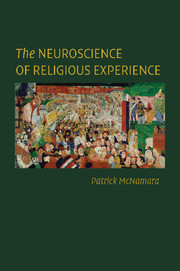Book contents
- Frontmatter
- Contents
- Preface
- Acknowledgments
- 1 God and the Self
- 2 On the Self and the Divided Self
- 3 Mechanisms and Dynamics of Decentering
- 4 Neurology of the Self
- 5 Neurology of Religious Experiences
- 6 Neurochemistry of Religiosity
- 7 Self-Transformation as a Key Function of Performance of Religious Practices
- 8 Self-Transformation through Spirit Possession
- 9 God Concepts
- 10 Religious Language
- 11 Ritual
- 12 Life-Span Development of Religiosity and the Self
- 13 The Evolution of Self and Religion
- References
- Index
3 - Mechanisms and Dynamics of Decentering
Published online by Cambridge University Press: 30 October 2009
- Frontmatter
- Contents
- Preface
- Acknowledgments
- 1 God and the Self
- 2 On the Self and the Divided Self
- 3 Mechanisms and Dynamics of Decentering
- 4 Neurology of the Self
- 5 Neurology of Religious Experiences
- 6 Neurochemistry of Religiosity
- 7 Self-Transformation as a Key Function of Performance of Religious Practices
- 8 Self-Transformation through Spirit Possession
- 9 God Concepts
- 10 Religious Language
- 11 Ritual
- 12 Life-Span Development of Religiosity and the Self
- 13 The Evolution of Self and Religion
- References
- Index
Summary
But we have this treasure in earthen vessels, that the excellency of the power may be of God, and not of us. We are troubled on every side, yet not distressed; we are perplexed, but not in despair; persecuted, but not forsaken; cast down, but not destroyed…
– St. Paul, 2 Cor. 4Introduction
The central executive Self, the free agent intellect that chooses the good and the true, is the treasure to which St. Paul refers. It is a treasure that can be lost unless the religious path is taken. I have argued that religious practices help to build up a centralized executive Self by reducing the discrepancy between an ideal Self and the current Self. I want to show in this chapter that a process I call “decentering” implements the discrepancy reduction process and helps to construct a centralized, ideal executive Self. It does so by periodically taking the current Self “offline,” out of working memory, for repair and construction and then linking it back with an ideal possible Self commanding a greater range of computational and cognitive resources. By offline I simply mean removed from working memory and placed into a suppositional, logical space (a mental space, familiar to anyone who has imagined possibilities for themselves). It is a conscious form of imaginative mental processing that does not occur in working memory.
- Type
- Chapter
- Information
- The Neuroscience of Religious Experience , pp. 44 - 58Publisher: Cambridge University PressPrint publication year: 2009
- 1
- Cited by



